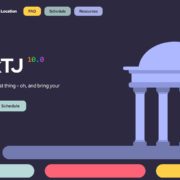Language Matters: Incorporating an Equity Lens in Your Communication
Have you ever used words like ‘vulnerable,’ ‘disadvantaged’ and ‘underserved’ to describe the people you serve? In education and health, we learn to use these words to describe people who live in under-resourced communities. These words have pejorative undertones that are demeaning, belittling and discriminating.
The term underserved connotates a group of people who are “waiting to be handed something on a silver platter and that all of their challenges relate to services when in fact their challenges reflect a lack of resources – of which services is only one.”1 The term is also “part of a suite of commonly-used, vague words and expressions” and does not adequately describe the structural forces that limit the resources for particular populations.2 In fact, their challenges reflect a lack of resources or under-resourced, which includes leadership, physical assets, and power.
I began to understand the use of my own language after participating in a webinar led by Jerry Hawkins from Dallas Truth, Racial Health & Transformation. I learned why language matters and how to stop racist and discriminatory narratives. 3

Photo by Sunbeam Photography on Unsplash
The use of appropriate language is critical to building bridges in our community. Over the last year with the Child Health Advocacy Institute at Children’s National, we have trained over 300 employees on how to incorporate an equity lens in their communication. We encourage inclusive language to avoid perpetuating negative biases and instead embrace diversity and inclusivity to promote equity and strengths in our society. We remind our colleagues that this is a continuous learning process and share the quote from a collaborative organization called SumOfUs: 4
“Reclaiming power from racist systems takes a willingness to come to the conversation with curiosity and openness and a willingness to get it wrong without letting that stop us from continuing to try to understand and do better.”
Below are a few ways you can incorporate inclusive language in your writing and when speaking to colleagues, patients and families.
PEOPLE-FIRST LANGUAGE places the person at the center rather than the problem. Focusing on the individual rather than the condition minimalizes generalizations and stereotypes. Using the terms “a person with” or “person experiencing” a specific condition.
Rather than saying…
- Disadvantaged children
- Disabled people
- The homeless
- Autistic children
Instead say…
- Children experiencing health care disadvantages
- People with disabilities
- Families experiencing homelessness
- Children diagnosed with Autism Spectrum Disorder
EMPOWERING LANGUAGE seeks to frame issues with an agency lens, rather than depicting people living in poverty as helpless. The use of empowering language portrays affected people as the agents in their own story.
Rather than saying…
- Resources for at-risk children
- Underserved population
- Vulnerable or disadvantaged
- Poor/poorest
- Our work transforms lives and families
Instead say…
- Resources to reduce risk factors for children
- Under-resourced population
- People experienced barriers
- People with income below the poverty line
- Our work provides support to individuals to transform their lives and families
STRENGTH-BASED LANGUAGE draws on a person’s strengths rather than deficits. The use of strength-based language focuses on a person’s contributions and aspirations as opposed to the challenges they face.
Rather than saying…
- Victims of bullying
- Children suffering from cancer
- Minimize risk
- Comorbidities
Instead say…
- Survivors of bullying
- Children living with cancer
- Maximize growth
- Co-existing conditions
References
1. Burke NS. How to Fix a Broken Tongue. https://medium.com/@natalie4health/how-to-fix-a-broken-tongue-cade93816add. Accessed February 22, 2021.
2. Katz AS, Hardy B, Firestone M, Lofters A, Morton-Ninomiya ME. Vagueness, power and public health: use of ‘vulnerable’ in public health literature. Crit Public Health. 2019 Aug; 30(5): 601-611.
3. Hawkins J. Dallas Truth, Racial Healing & Transformation, Language Matters: Storytelling for Racial Justice. https://www.youtube.com/watch?v=hGrTvrl2HIM. Accessed March 8, 2021.
4. Thomas H, Hirsch A. A Progressive’s Style Guide. https://interactioninstitute.org/wp-content/uploads/2016/06/Sum-Of-Us-Progressive-Style-Guide.pdf. Accessed March 8, 2021.
Header photo by Kat Stokes on Unsplash
About the author

Desiree de la Torre, MPH, MBA
Executive Director of Community Affairs & Population Health Improvement and Government Affairs within the Child Health Advocacy Institute at Children's National Hospital





